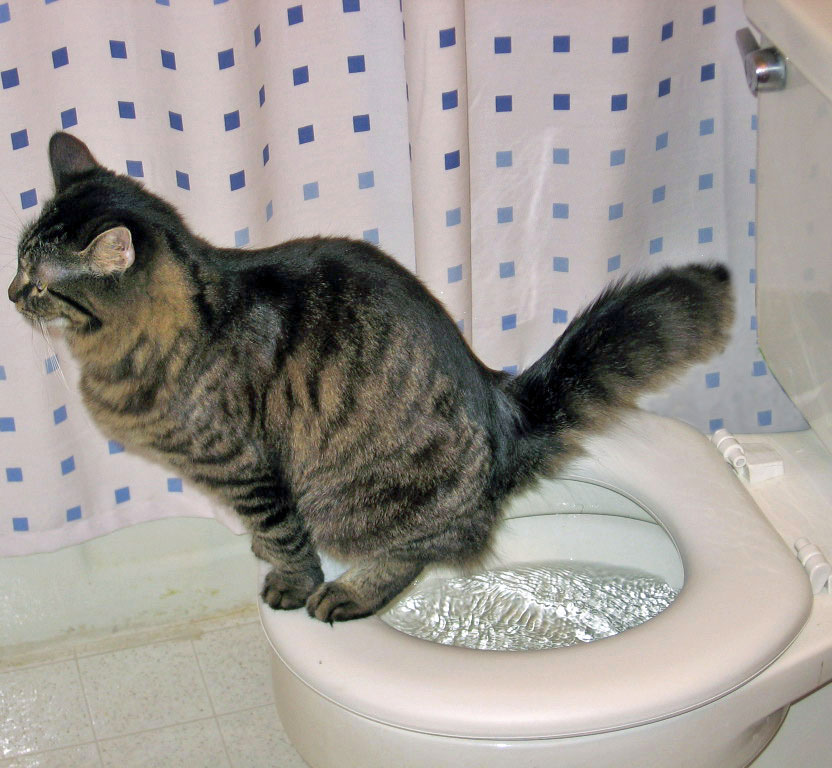The author is making a few great pointers about Can You Flush Cat Poo or Litter Down the Toilet? overall in this great article following next.

Intro
As pet cat owners, it's essential to bear in mind exactly how we get rid of our feline friends' waste. While it may appear hassle-free to purge feline poop down the toilet, this method can have destructive effects for both the environment and human wellness.
Alternatives to Flushing
The good news is, there are safer and more responsible methods to throw away feline poop. Consider the following alternatives:
1. Scoop and Dispose in Trash
The most usual technique of taking care of feline poop is to scoop it right into a naturally degradable bag and throw it in the garbage. Be sure to make use of a dedicated trash inside story and throw away the waste promptly.
2. Usage Biodegradable Litter
Opt for eco-friendly cat clutter made from materials such as corn or wheat. These litters are eco-friendly and can be safely disposed of in the garbage.
3. Bury in the Yard
If you have a backyard, think about hiding cat waste in an assigned location away from vegetable yards and water sources. Make sure to dig deep enough to stop contamination of groundwater.
4. Set Up a Pet Waste Disposal System
Invest in a pet dog waste disposal system particularly made for pet cat waste. These systems use enzymes to break down the waste, decreasing odor and ecological influence.
Health Risks
In addition to environmental worries, purging cat waste can also pose health and wellness dangers to human beings. Pet cat feces might include Toxoplasma gondii, a bloodsucker that can trigger toxoplasmosis-- a potentially extreme illness, especially for pregnant females and individuals with damaged immune systems.
Ecological Impact
Purging cat poop presents dangerous microorganisms and bloodsuckers right into the water, posing a significant risk to water environments. These impurities can negatively impact marine life and compromise water top quality.
Conclusion
Responsible animal ownership extends past providing food and sanctuary-- it also involves correct waste management. By refraining from flushing pet cat poop down the toilet and going with different disposal techniques, we can reduce our ecological impact and secure human wellness.
Why Can’t I Flush Cat Poop?
It Spreads a Parasite
Cats are frequently infected with a parasite called toxoplasma gondii. The parasite causes an infection called toxoplasmosis. It is usually harmless to cats. The parasite only uses cat poop as a host for its eggs. Otherwise, the cat’s immune system usually keeps the infection at low enough levels to maintain its own health. But it does not stop the develop of eggs. These eggs are tiny and surprisingly tough. They may survive for a year before they begin to grow. But that’s the problem.
Our wastewater system is not designed to deal with toxoplasmosis eggs. Instead, most eggs will flush from your toilet into sewers and wastewater management plants. After the sewage is treated for many other harmful things in it, it is typically released into local rivers, lakes, or oceans. Here, the toxoplasmosis eggs can find new hosts, including starfish, crabs, otters, and many other wildlife. For many, this is a significant risk to their health. Toxoplasmosis can also end up infecting water sources that are important for agriculture, which means our deer, pigs, and sheep can get infected too.
Is There Risk to Humans?
There can be a risk to human life from flushing cat poop down the toilet. If you do so, the parasites from your cat’s poop can end up in shellfish, game animals, or livestock. If this meat is then served raw or undercooked, the people who eat it can get sick.
In fact, according to the CDC, 40 million people in the United States are infected with toxoplasma gondii. They get it from exposure to infected seafood, or from some kind of cat poop contamination, like drinking from a stream that is contaminated or touching anything that has come into contact with cat poop. That includes just cleaning a cat litter box.
Most people who get infected with these parasites will not develop any symptoms. However, for pregnant women or for those with compromised immune systems, the parasite can cause severe health problems.
How to Handle Cat Poop
The best way to handle cat poop is actually to clean the box more often. The eggs that the parasite sheds will not become active until one to five days after the cat poops. That means that if you clean daily, you’re much less likely to come into direct contact with infectious eggs.
That said, always dispose of cat poop in the garbage and not down the toilet. Wash your hands before and after you clean the litter box, and bring the bag of poop right outside to your garbage bins.
https://trenchlesssolutionsusa.com/why-cant-i-flush-cat-poop/

Hopefully you enjoyed reading our topic on Don’t flush cat feces down the toilet. Thank you for taking time to read through our posting. In case you enjoyed reading our blog entry if you please don't forget to share it. Bless you for your time. Visit again soon.
Free Estimate
Comments on “Prevent Clogs and Damage: Don't Flush Cat Poop Down Your Toilet - Professional Recommendations”